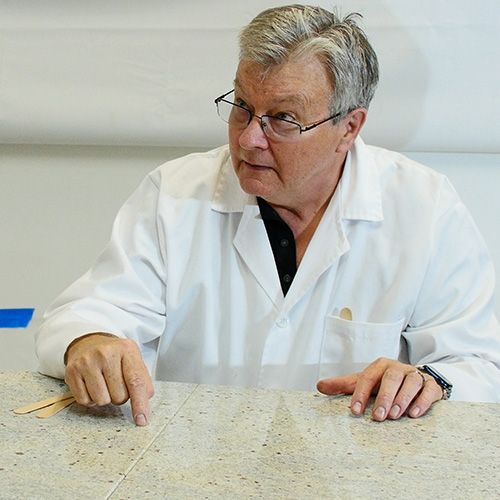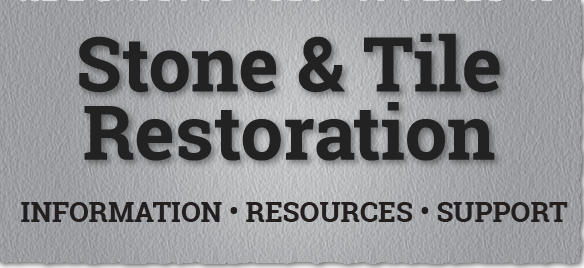What’s 2025 Looking Like for the Stone Restoration Business?
By Frederick M. Hueston
With all the changes happening in the economy, technology, and consumer preferences, the stone restoration business is poised for some exciting opportunities in 2025. So, what can we expect in the coming year? Let’s take a closer look at the trends, challenges, and opportunities that could shape the future of our industry.
1. Technology and Tools Are Getting Smarter
One of the biggest game-changers for stone restoration professionals in 2025 is going to be technology. We’ve already seen advancements in tools and equipment that make our jobs easier, and that trend is only going to continue. From advanced polishing machines to infrared thermography for inspecting stone surfaces, technology will allow us to work faster and more efficiently while delivering higher-quality results.
One area to keep an eye on is automation. While we’re not talking about robots taking over the industry (at least not yet), automated tools for things like grinding, polishing, and even cleaning are starting to hit the market. These tools will help contractors cut down on labor costs and time while also ensuring consistent, high-quality finishes. Think of it as giving your team a high-tech boost.
Another exciting development is the rise of augmented reality (AR) for training and diagnostics. Imagine being able to “see” under the surface of stone to assess wear or damage through AR glasses. It may sound futuristic, but advancements in this area could make site assessments faster and more accurate than ever before.
2. Sustainability Is More Important Than Ever
In 2025, sustainability is going to be front and center in the stone restoration business. Eco-friendly practices are no longer just a trend—they’re becoming a necessity. Customers are becoming more eco-conscious and expect the same from the businesses they hire. Whether it’s using non-toxic cleaning products, opting for sustainable stone sourcing, or reducing water and energy usage during restoration, sustainability is something every restoration professional will need to embrace.
Recycling is also on the rise. More contractors are finding ways to recycle materials like stone slurry (the byproduct of polishing and grinding) and reusing them in different ways. By adopting these practices, you’ll not only appeal to environmentally-minded clients but also reduce your operational costs.
Additionally, green certifications for stone restoration businesses are expected to become more common. In 2025, it might even be a good idea to consider pursuing these certifications, as they could set you apart from your competitors.
3. The Demand for Luxury and Customization Continues to Grow
The demand for high-end, luxury stone restoration is on the rise, and 2025 is shaping up to be a year where this trend will continue to flourish. Homeowners and businesses are increasingly opting for premium stone surfaces like marble, granite, and quartz, and they want them to look as good as new, even after years of use.
In particular, customization will be a key trend. Customers will be looking for unique finishes, textures, and colors, giving restoration professionals more room to showcase their craft. Offering specialized services—like creating custom-honed or polished finishes, or restoring rare or unique stones—will help you stand out in the competitive market.
Additionally, as design trends evolve, there will be a demand for more creative stone restoration techniques. From reintroducing vintage finishes to matching new stones with original, historic surfaces, the ability to provide tailored solutions will keep your business in high demand.
4. A Continued Shift Toward Residential and Commercial Spaces
The stone restoration business is traditionally known for focusing on commercial properties like office buildings, hotels, and shopping centers. But in 2025, there’s likely to be a shift toward more residential work. With the housing market adjusting to new conditions, more homeowners will be investing in restoring their existing stone surfaces rather than replacing them.
In addition to regular residential properties, the growing popularity of luxury home renovations means that more high-end restoration work will be in demand. Kitchens, bathrooms, and living areas featuring stone countertops, flooring, and walls will need regular upkeep, providing stone restoration professionals with a steady stream of business.
On the flip side, commercial spaces are still an important market, particularly in urban areas where office buildings, retail spaces, and hotels use a lot of stone for flooring, walls, and countertops. Offering both residential and commercial services will keep your business versatile and adaptable to changing trends.
5. Labor Challenges and Training
As demand for stone restoration services grows, so does the need for skilled labor. In 2025, labor shortages in the trades industry could continue to impact businesses, especially as the demand for stone restoration increases. Training and retaining talented professionals will be more important than ever.
Investing in skilled training for your team will not only improve the quality of your work but also give you an edge over the competition. Whether it’s learning new polishing techniques, staying on top of emerging materials like engineered stones, or becoming proficient in advanced restoration technologies, having a well-trained team is going to be crucial for success.
Additionally, consider offering apprenticeships or partnering with local trade schools to develop the next generation of skilled stone restoration workers. These programs can help ensure that you have a steady pipeline of qualified professionals to support your growing business.
6. Customer Expectations and Communication
In 2025, customer expectations are likely to continue evolving, with clients becoming more informed and demanding. Thanks to the internet and social media, customers have access to an almost endless amount of information, which means they’re more likely to know exactly what they want.
This means communication will be key. Being able to clearly explain your services, offer digital estimates, and provide transparent timelines will set your business apart. In fact, offering online booking, virtual consultations, and real-time updates via apps or email could be an excellent way to cater to a more tech-savvy customer base.
Conclusion: A Year Full of Opportunity
So, what’s 2025 looking like for the stone restoration business? It’s shaping up to be an exciting year full of technological advancements, sustainability efforts, luxury and customization trends, and a shift toward residential services. But it’s not without its challenges—skilled labor shortages and rising customer expectations will require businesses to stay sharp and adaptable.
For those who stay ahead of the curve, 2025 could be a year of tremendous growth and success. Embrace new tools, focus on training, and keep up with customer demands, and you’ll be well-positioned to thrive in the future of stone restoration.


